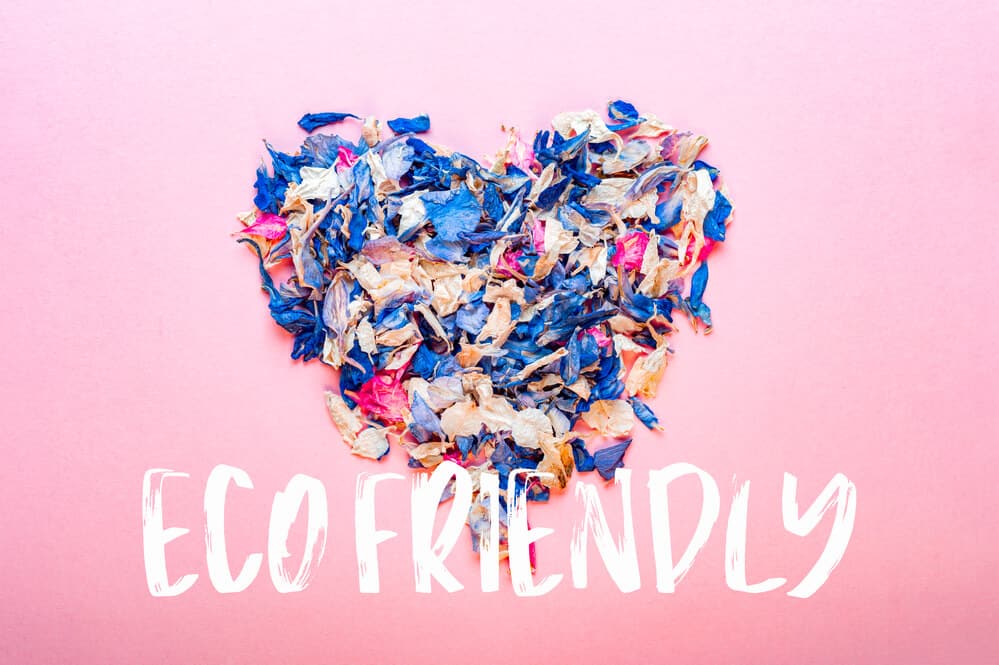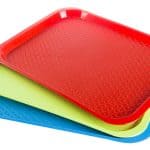Whether you are planning a party or a wedding, if confetti is in the plan, it is important to be well informed.
Many people think of confetti as little pieces of paper, so are they Biodegradable?
Unfortunately, many kinds of confetti are not biodegradable. Confetti can be made with plastic, paper, or even metals. Any confetti that glitters is not going to be biodegradable.
What Is Biodegradable?
Biodegradable is when something breaks down naturally, or decomposes, over time.
Typically, anything biodegradable will be made from biodegradable ingredients such as plants or animals. However, there is more to it than that.
The process of making something can affect whether it is biodegradable or not.
The addition of Preservatives or stabilizers to keep products from degrading too early can also affect the product’s ability to naturally biodegrade.
Many biodegradable products require specialized facilities for the processes of biodegrading because they have these preservatives and stabilizers.
What Is Compostable?
Compostable is when an item, not only is biodegradable, but decomposes within a specific time period (typically 90 days).
In addition, items that are compostable are items that can be turned into compost.
Not all biodegradable items are good for compost which is why it is important to know whether your item is compostable, biodegradable, or both.
What Is Confetti Made Of?
Confetti can be made of plastic, metal, or paper. Confetti can also be made out of plant fibers.
However, Plant-Based Confetti is harder to find and more expensive.
If you are looking for a cheaper way to provide confetti, consider using flower petals instead.
They naturally biodegrade and are compostable. Choose sweet smelling ones for the best effect.
Plant Confetti options:
- Lavender
- Chamomile
- Calendula
- Mint
- Roses
- And more
The important thing is to avoid using plastic confetti or metal confetti.
Metal confetti includes paper confetti that has been coated to make it sparkle or shine.
The process that does this makes the confetti less biodegradable and less safe for the environment.
Is Confetti Bad For The Environment?
Confetti made of materials that do not biodegrade is harmful to the environment.
This type of confetti, whether it is made of plastics, metals, or metallic paper, may not biodegrade. It may also have ingredients that are toxic to animals.
Confetti is notorious for being hard to clean up.
No one wants to miss a piece of confetti that could make an animal sick. Small animals might even choke on confetti that gets stuck in their throat.
Neither Plastic Confetti nor metal confetti can be recycled because the pieces are too small.
They will invariably end up in the trash, headed for a landfill.
If confetti does happen to biodegrade it can take up to 1000 years or more for the process to be completed.
Can Confetti Be Eco-Friendly Or Environmentally Friendly?
Confetti made out of natural, biodegradable, and compostable materials can be environmentally friendly.
The best options are confetti made out of natural plant fibers, such as paper confetti, or out of plants themselves, such as leaf and petal confetti.
When choosing a confetti, consider if the plants used are sustainable plants or not.
- Is the process for growing the plants sustainable?
- Is the harvesting of the plants sustainable?
- Is the process of turning the plant fibers into confetti sustainable?
- What other ingredients are being used?
- Could any of them be harmful to animals when they biodegrade?
- How quickly will the confetti biodegrade?
How Long Does It Take For Confetti To Decompose?
This question has many answers depending on the type of confetti used.
- Metal Confetti will not biodegrade because it is not made out of biological materials.
Metal Confetti can melt in the heat and become dangerous to the environment.
- Plastic Confetti will take hundreds to thousands of years to biodegrade.
As with metal, plastic confetti can melt in high temperatures and impact the environment.
- Paper Confetti is often biodegradable. Biodegradable paper confetti will decompose in 2-4 months. Sometimes, it will decompose even quicker depending on the weather.
However, metallic paper confetti has a metallic element that is often not biodegradable.
Paper confetti made of plant materials and no non-biodegradable materials is often compostable.
- Plant Confetti is biodegradable so long as no metallic or plastic paints have been used to preserve it. Plant confetti will take 1-3 months to biodegrade. Weather and temperatures will affect how quickly it will decompose.
Plant confetti is the safest option for the environment.
The tiny pieces of plants will biodegrade just as they would if they fell off the plant.
Plant confetti can be expensive.
However, you can also make it at home.
The nice thing about All-Natural-Plant-Based Confetti is that you do not have to worry about picking it all up at an outdoor wedding.
Leave it for nature to take care of. It is important to be aware if any of the guests might have allergies. Make a list ahead of time so you can avoid sneeze-inducing plants.


